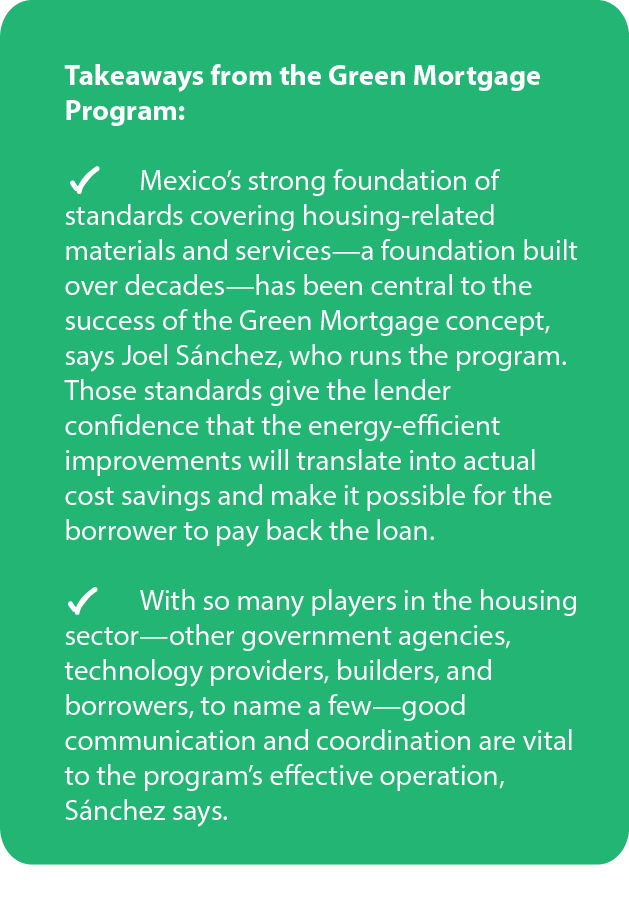
Through its Green Mortgage program, the housing lender Infonavit—the name stands for the Institute of the National Housing Fund for Workers—provides a loan add-on, on top of the regular mortgage, to make the home more energy-efficient.
Infonavit is a public institution that was started in the 1970s to provide workers with more affordable access to housing. Workers and employers who participate in Mexico’s social security system also pay into the housing fund and can borrow against it to buy, build, or repair a home.
The Green Mortgage program got its start 10 years ago, as a pilot project funded in part by the U.S. Agency for International Development with support from the engineering school at the National Autonomous University of Mexico. Since 2011, all Infonavit mortgages—some 365,000 per year, or 1,000 per day, including weekends—have included this green component, according to Joel Sánchez Briseño, who manages the Green Mortgage program.

Not every borrower can afford the full menu of options for energy efficiency, which include major investments such as insulation and double-pane windows. But every borrower must meet a certain number of requirements, under a point system, to save water, electricity, or natural gas.
The idea, Sánchez said, is that the energy savings obtained from making these improvements allow the borrower to pay back the loan add-on, which may range from $200 to $2,100, depending on the person’s socioeconomic status and other factors. Developers who build subsidized housing for the low-income market must also meet energy-efficiency requirements, Sánchez said.
The scale of the Green Mortgage program—about 70 percent of home loans in the country go through Infonavit—has helped drive a robust market in small-scale energy-efficient equipment and materials in Mexico, according to Sánchez. For example, he said, prices for home solar water heaters have dropped by about 30 percent in the last few years, in response to growing demand.
Infonavit is a lender, not a builder, so the work of installing the improvements is done by private companies throughout the country. They have to show that they meet certain quality standards to provide goods or services through the Green Mortgage program.
“This program wouldn’t be able to operate without a structure of official standards, a certification structure that guarantees the products’ quality and savings,” Sánchez said. “To qualify to play, you must meet the standards, the certifications.”
Of course, at the end of the day, the best standards won’t guarantee energy efficiency if consumers don’t do their part. As Sánchez put it, “All these technologies are of no use if people leave the door open.”
 View Map
View Map